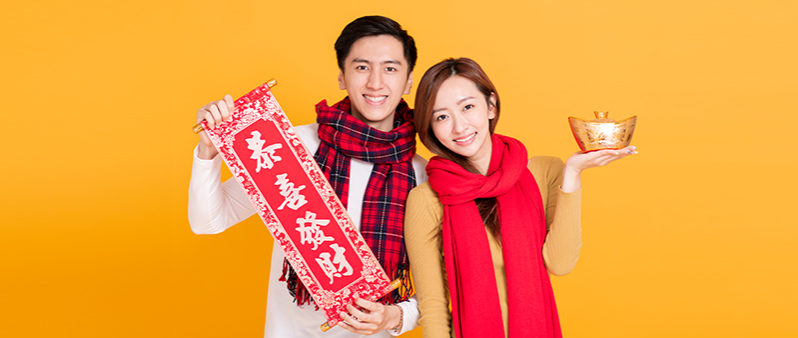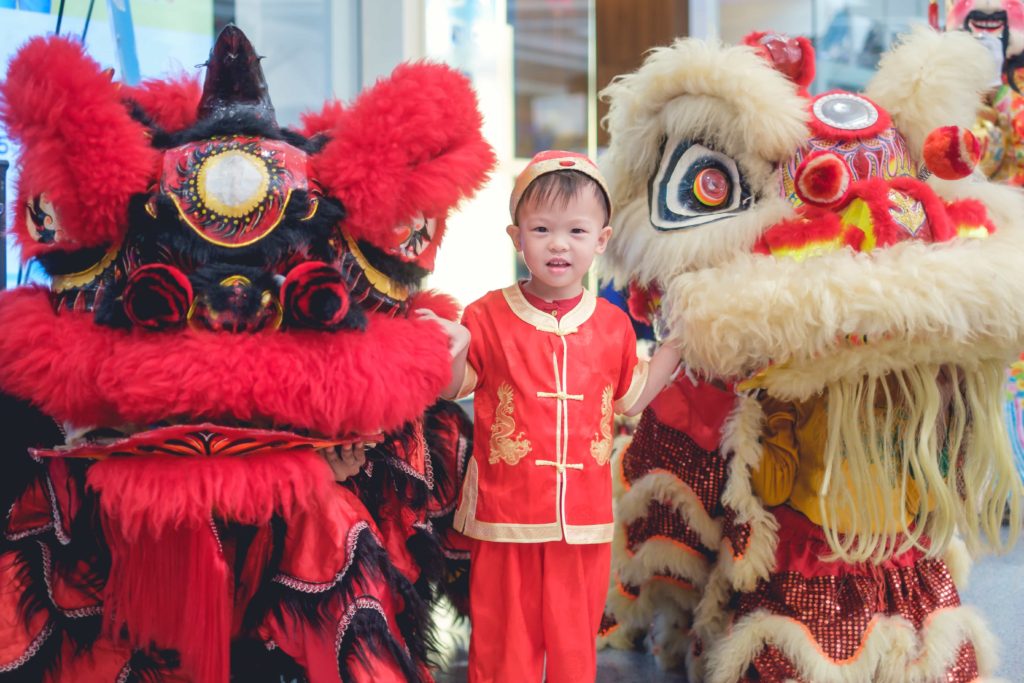
Chinese Lunar New Year Vocabulary and Phrases Explained – Word Nerd
Top Mandarin Chinese Lunar New Year (Spring Festival) Greetings and Expressions
Welcome to the Pimsleur Word Nerd Blog Series!
In each Word Nerd post, I’ll share interesting insights into the origins and etymology of words in various languages, and other fun tidbits related to words and language. In this first post, I’ll dive into some words, expressions, and phrases in Mandarin Chinese which are associated with the Lunar New Year, Spring Festival, or Chinese New Year as it is commonly known.
Lunar New Year Greetings

On Lunar New Year, it’s traditional to greet people with the phrase: 新年快乐!(xīn nián kuài lè) which means “Have a Happy New Year!” Xīn means “new,” or “newly.” Nián means “year.” Kuài has many meanings, most of them related to speed, for example, the rate something is going, or making haste to get somewhere, but it also means a quickness of thought or being clever. In this way, it’s related to the sharpness of both wits, and knives. Lè means, “happy, cheerful,” and also is related to laughter. So if taken literally, the phrase xīn nián kuài lè sort of means, “new year haste to happy laughter.” I’m sure we all could use more happy laughter in our lives.
An interesting thing about the etymology, or origins, of nián, or “year,” is that it’s related to the rice harvest, and the tradition of celebrating the Lunar New Year has ancient ties to agriculture. 农历新年 (nóng lì xīn nián) means, “Lunar New Year,” in Mandarin. You’ll recognize xīn and nián from the new year’s greeting above. Nóng is related to things having to do with agriculture, and lí in this usage is related to history or the passage of time. Together they reference harvest time.
Another common phrase related to Chinese New Year is 过年 (guò nián). Guó means, “to cross,” or “to go over,” but also “to live,” so although guó nián literally means “to cross to the new year,” some people also associate it with overcoming a mythical beast called the Nián.
The Chinese Legend of Nián
Although the story of the Nián was first recorded in the early 20th century, it’s thought that it’s actually part of traditional folk mythology and is much more ancient. In the tale, a frightening beast, which lives either in the sea or the mountains depending on where you live, comes out of its lair on the Lunar New Year to feed on men, animals or crops, and especially children. Descriptions of its physical appearance vary from a flat-faced lion with a dog’s body and giant teeth to a giant beast with two long horns. Either way, the Nián is thought to have a severe sensitivity to loud noises, the color red, and fire.
Though the traditional Lunar New Year practices of lighting fireworks, playing loud drums, hanging red lanterns, and dressing in red robes have been recorded in ancient texts without mention of the Nián, modern celebrations include the beast as a key character. Some legends cite the Nián myth as the reason why the Chinese lion dance was created in the first place.
I hope this post was informative and inspiring. If you’d like to learn more words in Mandarin, try our Pimsleur Mandarin courses. Your first week is free. After that, pay only 14.95 per month for unlimited access to all 5 levels.
To learn more about the Lunar New Year, read our post about it here. And stay tuned for more Word Nerd posts.
No Comments for "Chinese Lunar New Year Vocabulary and Phrases Explained – Word Nerd"